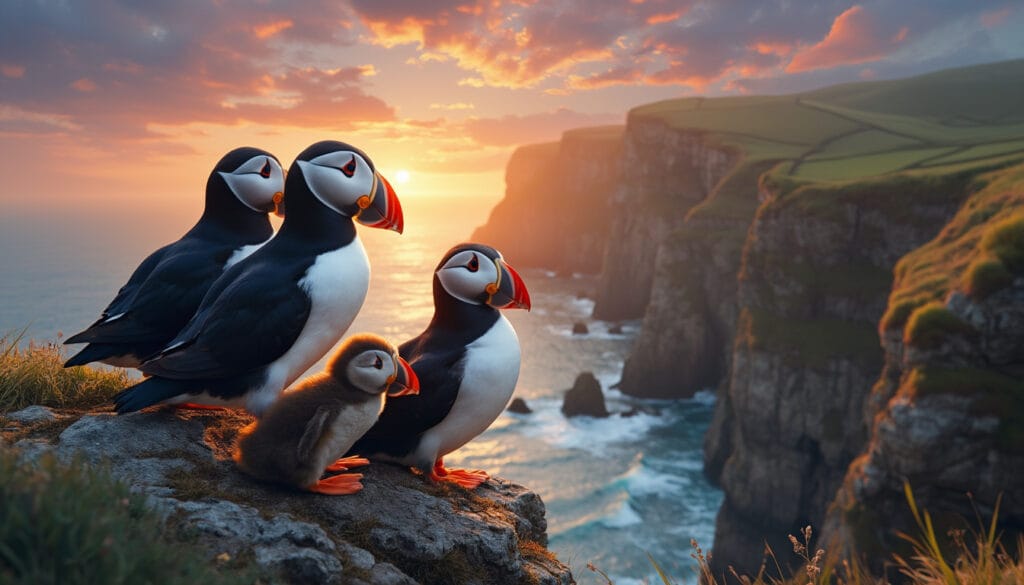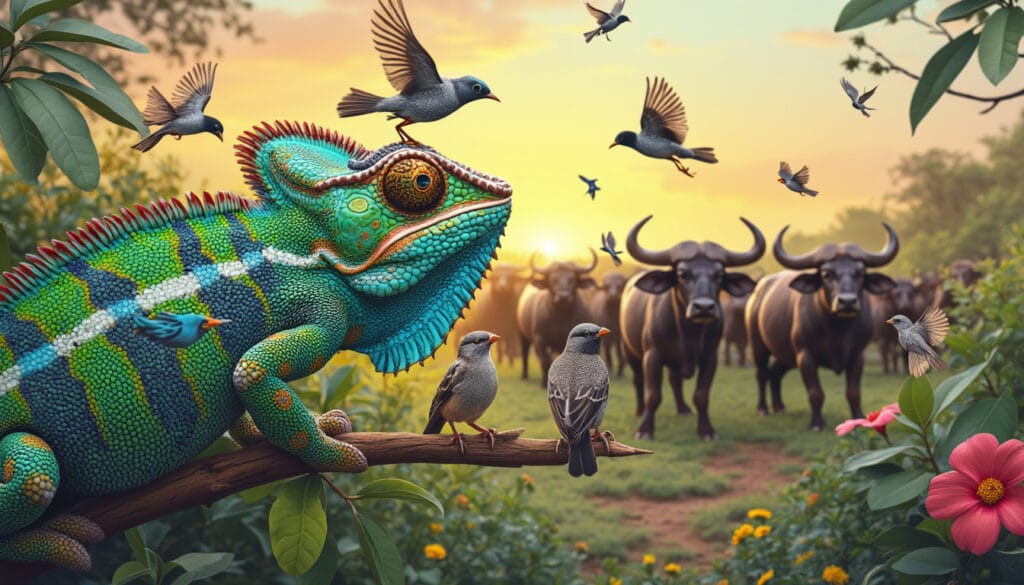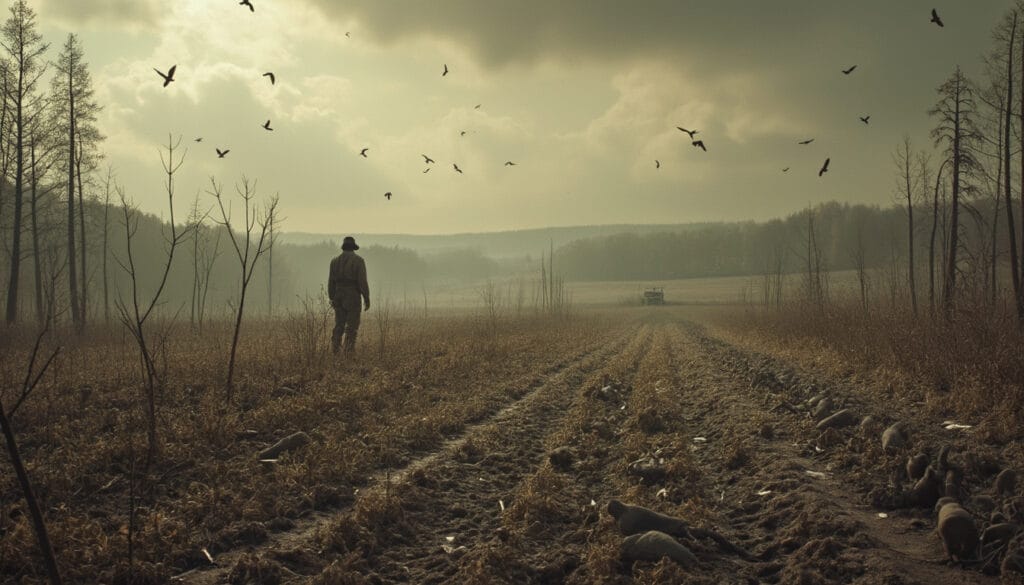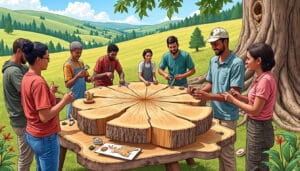The rugged cliffs of Purbeck hide a troubling secret.The last puffins in southern England struggle to survive.A dedicated team is trying to unravel the mystery of their decline.
Along the picturesque coast of Dorset, the puffins find refuge in narrow crevices, testament to a silent struggle for their survival. Once thriving with about twenty pairs, the population has plummeted to just three pairs, with no sightings of young in recent years. Volunteers brave the elements every spring to monitor these iconic birds. According to marine biologist Richard Caldow, the situation is alarming and could lead to local extinction. Uncertainty looms regarding the exact causes of this decline, despite intensive efforts to identify predators or food issues. Motion-activated cameras, installed in collaboration with the National Trust and Dorset Wildlife Trust, have revealed no obvious threats. While awaiting new solutions, hope rests on strengthened initiatives and a better understanding of the challenges facing Purbeck puffins.

Why are Purbeck puffins in danger?
The Purbeck puffins are an iconic species along the Dorset coastline, representing the last regular colony of puffins on the mainland of southern England. Historically, in the 1950s, around 80 birds nested on this coast, but this number has dramatically decreased to just three pairs currently. This alarming decline places the Purbeck puffins in a critical situation, threatening their long-term survival. The gradual disappearance of this colony is particularly concerning as it reduces local biodiversity and deprives future generations of the opportunity to observe these magnificent seabirds in their natural habitat.
What are the main threats facing puffins?
Several factors contribute to the decline of Purbeck puffins. One of the main threats is the decrease in food sources, likely due to climate change affecting the availability of essential fish for their diet. Additionally, predators such as crows, magpies, and possibly rats and mice may intrude into the crevices where puffins nest, disrupting their breeding. Extreme weather conditions, such as severe winter storms, also pose an increased risk, as they can lead to the death of several birds before they can return to breed. Finally, human activities, including tourism and coastal sports, while less likely to be directly responsible, can further disrupt the sensitive habitats of puffins.
What efforts are being made to save Purbeck puffins?
In response to this crisis, coordinated initiatives are being put in place to try to save the Purbeck puffins. Marine ornithologist Richard Caldow, in collaboration with the National Trust and the Dorset Wildlife Trust, oversees the installation of motion-activated cameras in the narrow crevices where puffins nest. These devices allow for monitoring the movements of the birds and identifying possible causes of their decline. Volunteers play a crucial role by analyzing over 70,000 collected images, looking for clues such as predator raids or other disturbances. Plans are also underway to upgrade these cameras with better equipment next year, relying on observations from this spring to refine conservation strategies.
What role do volunteers play in preserving puffins?
Volunteers are essential in the fight for the survival of the Purbeck puffins. Every spring, dedicated teams, regardless of weather conditions, undertake the arduous journey to the cliffs of Dorset. Their commitment allows for the collection of valuable data through the installation and maintenance of surveillance cameras. By sifting through over 70,000 images, they potentially contribute to solving the mystery of puffin decline by identifying direct or indirect threats. Moreover, their presence on the ground helps to maintain constant vigilance, crucial for any swift intervention in case of new threats. Without this dedication, conservation efforts would be significantly hindered, making the survival of Purbeck puffins even more uncertain.
What are the future challenges for the colony’s survival?
The main difficulty for the survival of the Purbeck puffins lies in the uncertainty regarding the necessary interventions to reverse the current trend. Without a clear understanding of the exact factors responsible for the decline, implementing effective measures becomes challenging. Proposed solutions, such as reinforcing site entrances to deter predators, are often costly and may face local opposition due to their potential impact on the natural landscape of the protected coastline. Additionally, climatic fluctuations continue to pose an unpredictable threat, complicating long-term planning. The scientific community must therefore continue to actively search for underlying causes to develop suitable and sustainable conservation strategies.
How can the community help protect puffins?
Protecting the Purbeck puffins relies not only on scientists and volunteers but also on the active support of the local community and visitors. Raising public awareness about the importance of this species and the challenges it faces is crucial to encouraging environmentally respectful behaviors. Educational initiatives, such as programs in schools and awareness campaigns, can strengthen community engagement. Furthermore, local businesses can contribute by funding conservation projects or adopting sustainable practices that minimize impact on natural habitats. Finally, visitors can help by respecting protected areas, avoiding disturbing the birds, and supporting conservation efforts through donations or volunteering. By joining forces, the community can play a decisive role in preserving Purbeck puffins for future generations.
Articles similaires
Thank you!
We will contact you soon.














